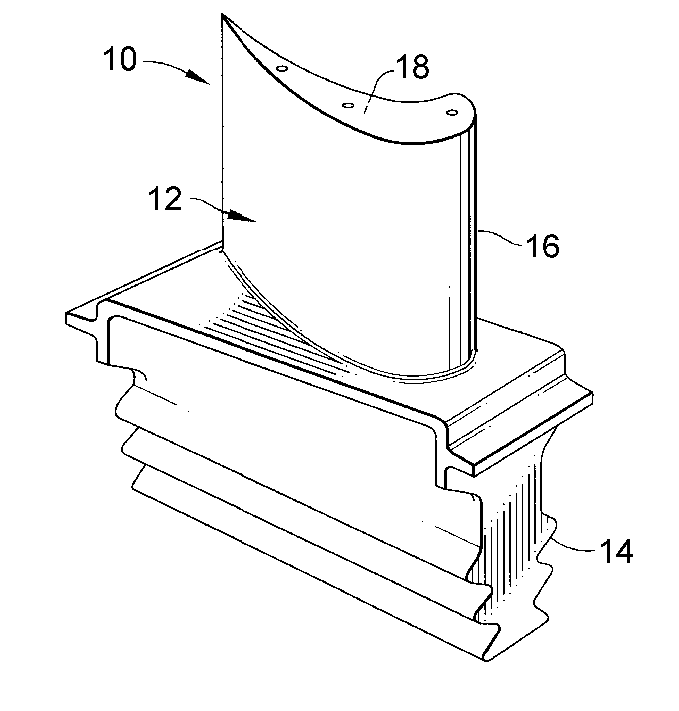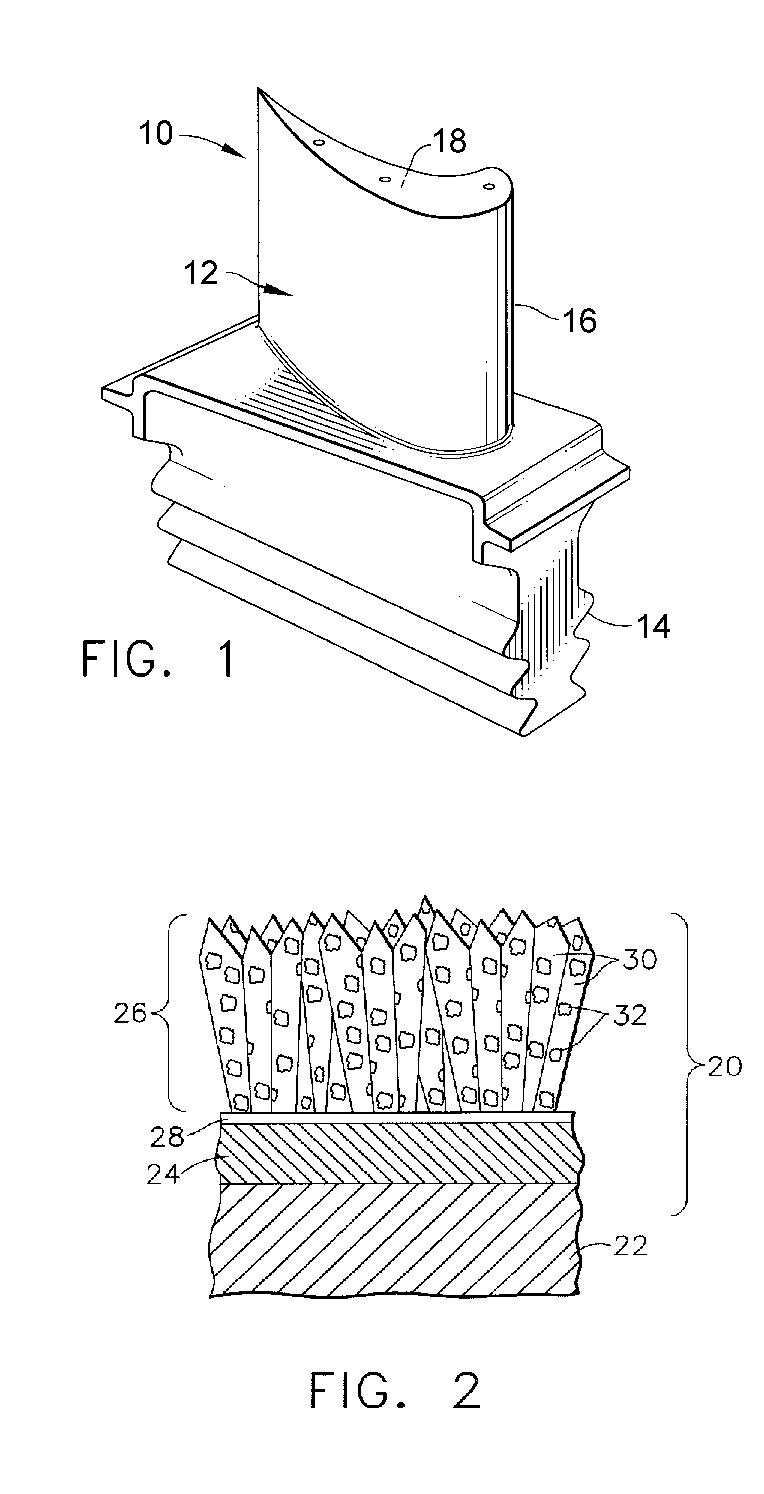Composite thermal barrier coating with improved impact and erosion resistance
- Summary
- Abstract
- Description
- Claims
- Application Information
AI Technical Summary
Benefits of technology
Problems solved by technology
Method used
Image
Examples
Embodiment Construction
[0012] While the present invention is applicable to a variety of components subjected to high temperatures, such as the high and low pressure turbine nozzles and blades, shrouds, centerbodies, combustor liners, and deflectors of gas turbine engines, the invention will be discussed in reference to a high pressure turbine (HPT) blade 10 shown in FIG. 1. The blade 10 generally includes an airfoil 12 against which hot combustion gases are directed during operation of the gas turbine engine, and whose surfaces are therefore subjected to heat, oxidation, and corrosion from the combustion gases as well as impact and erosion damage from particles entrained in the combustion gases. The airfoil 12 is shown as configured for being anchored to a turbine disk (not shown) with a dovetail 14. For purposes of the following description, the leading edge 16 and the concave (pressure) surface 18 of the airfoil 12 are also identified in FIG. 1.
[0013] To protect the airfoil 12 from its hostile operatin...
PUM
| Property | Measurement | Unit |
|---|---|---|
| Temperature | aaaaa | aaaaa |
| Temperature | aaaaa | aaaaa |
| Temperature | aaaaa | aaaaa |
Abstract
Description
Claims
Application Information
 Login to View More
Login to View More - R&D
- Intellectual Property
- Life Sciences
- Materials
- Tech Scout
- Unparalleled Data Quality
- Higher Quality Content
- 60% Fewer Hallucinations
Browse by: Latest US Patents, China's latest patents, Technical Efficacy Thesaurus, Application Domain, Technology Topic, Popular Technical Reports.
© 2025 PatSnap. All rights reserved.Legal|Privacy policy|Modern Slavery Act Transparency Statement|Sitemap|About US| Contact US: help@patsnap.com


